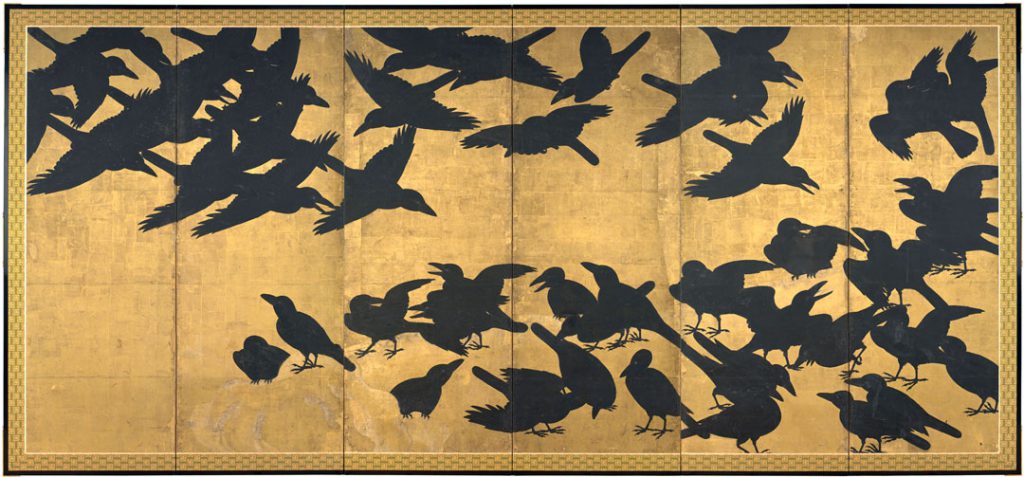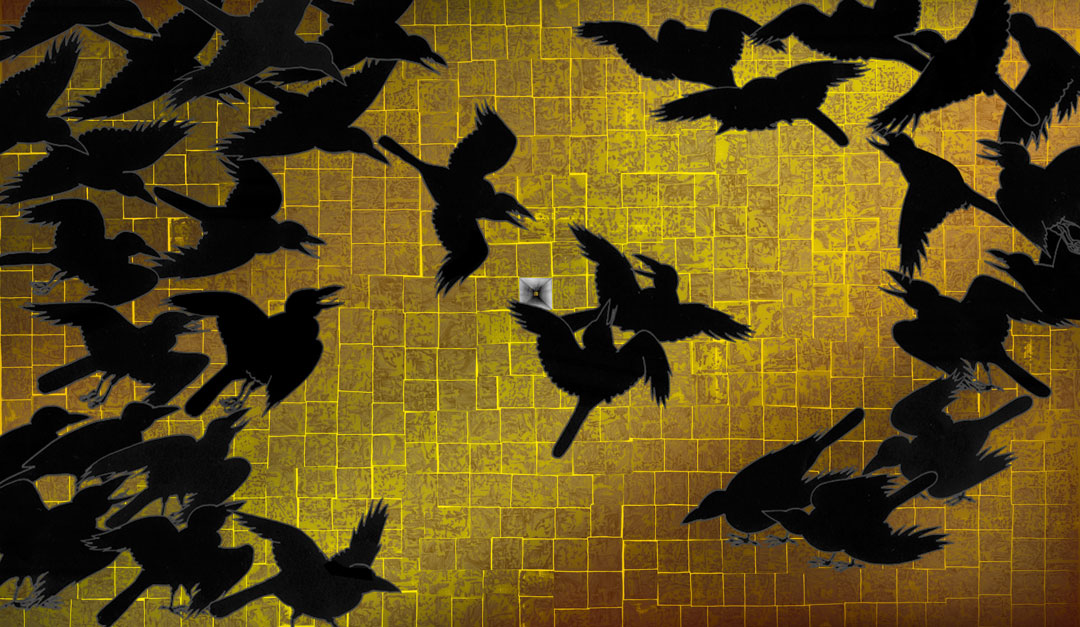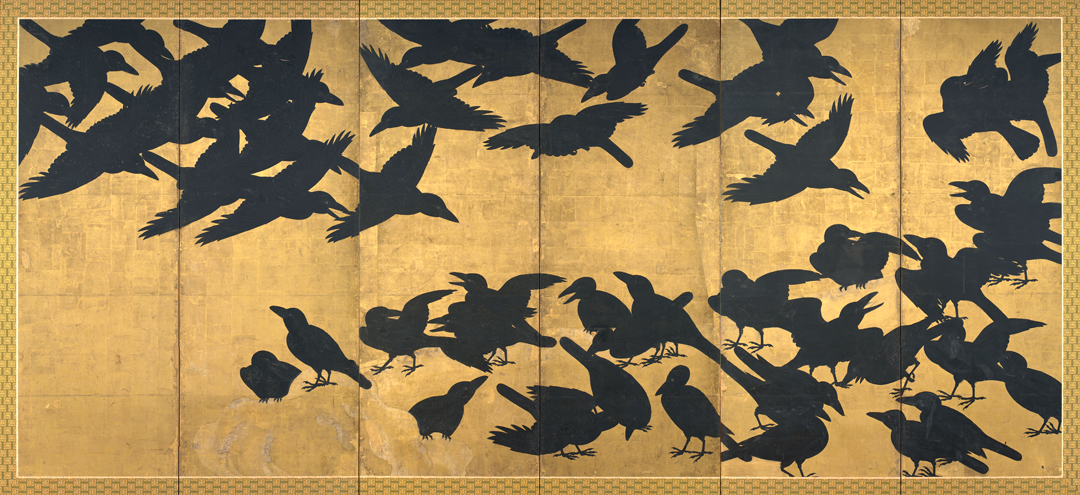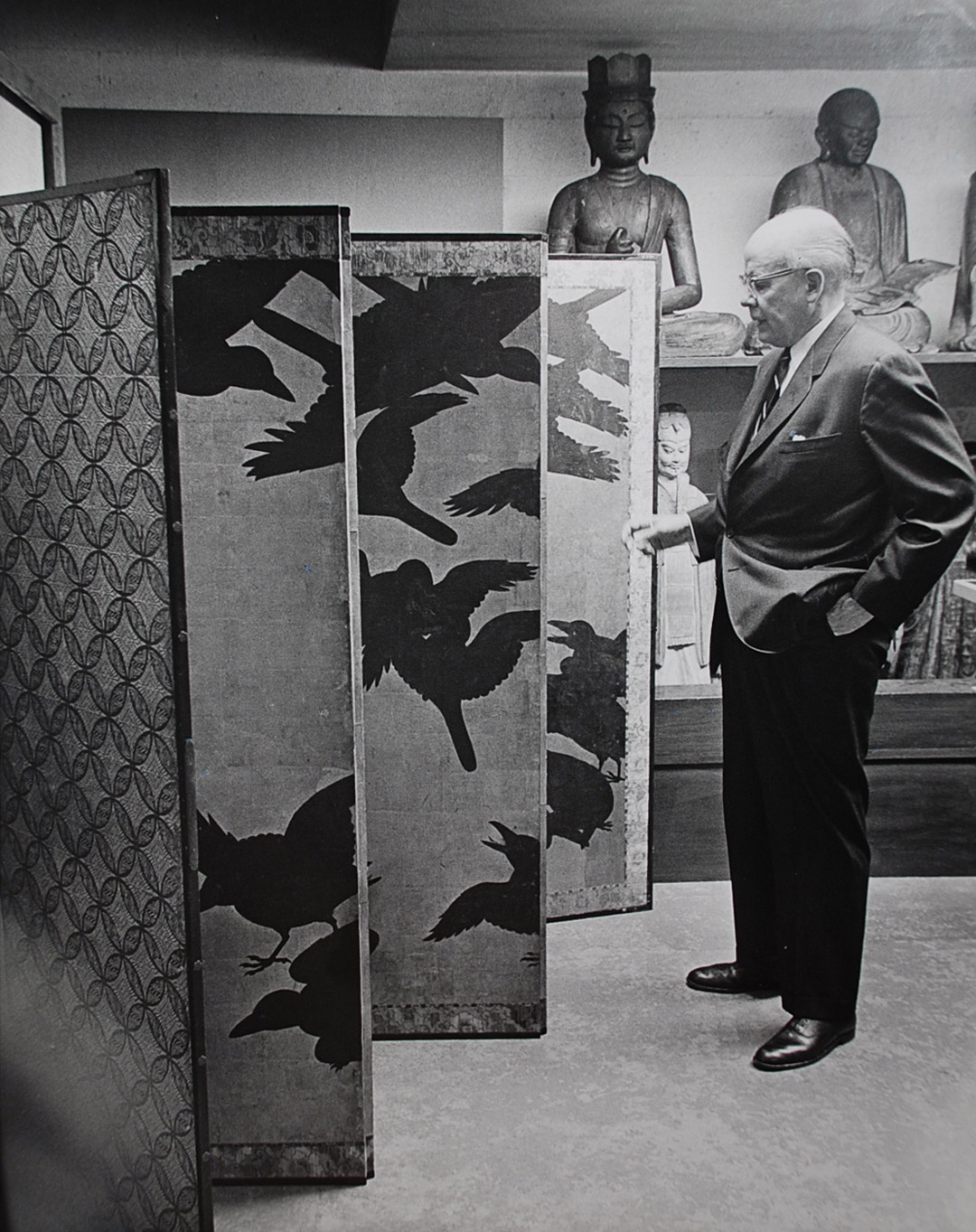Object of the Week: Crow
In 2016, the Seattle Asian Art Museum invited acclaimed Japanese artist Tabaimo to study the museum’s collection and curate an exhibition. The resulting presentation, Tabaimo: Utsutsushi Utsushi, was based on the concept of utsushi, which literally means “copying or paying homage to a master’s work.” Tabaimo selected several historical objects from SAM’s Asian art collection to present alongside her own work, some of which she produced specifically for the show. The last gallery of the exhibition featured the museum’s beloved pair of 17th-century Crows screens and Tabaimo’s response, a video installation that imagines new possibilities for the screens’ depicted action.

The subject of the Crows screens is a murder[1] of black-feathered birds set against squares of gold leaf. Descending en masse from the top left-hand corner of each screen, the crows wind their way down to a rocky crag along the bottom edge. In photographs of the screens, the birds appear as silhouettes, though an in-person viewing reveals the unique texture of each creature’s feathers, eyes, beak, and claws. The dynamism of the scene is created through the movements of the individual crows. In some places, they fly towards each other, suggesting an impending clash; in the upper right-hand corner, two birds take part in a midair tussle; and even those grounded crows spread their wings, look about, and caw.
In Tabaimo’s video utsushi of Crows, the birds are flattened into black silhouettes floating against a background of gold squares. Here, the squares take part in the action too. One by one, they sink into the pictorial space revealing rectangular hollows into which the feathered-beasts fly. An exhibition text explains:
In Japanese culture, it is a custom to tidy things up at the end of an event. Crows are often associated with untidiness because they look for food among garbage and create litter. Tabaimo does not intend for us to leave the gallery with a clear understanding of the exhibition, but rather, she would like to invite lively discussions by ending it in an ambiguous way, just as the crow brings untidy debris.[2]
– Murphy Crain, Asian Art and Gardner Center Coordinator


